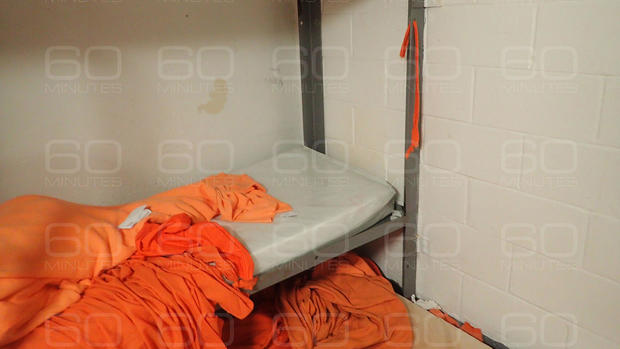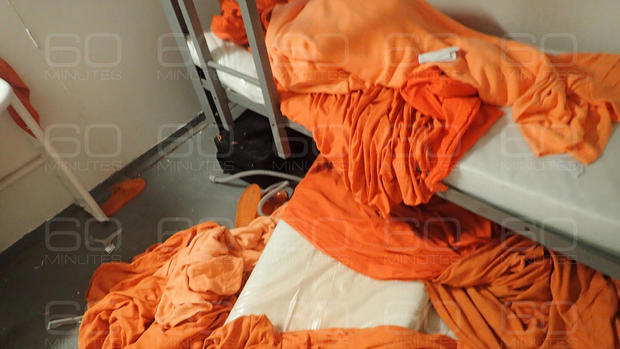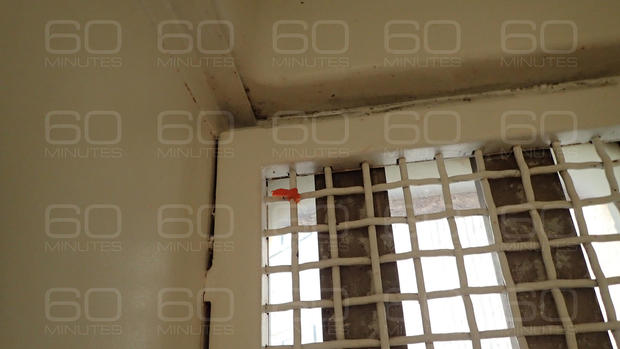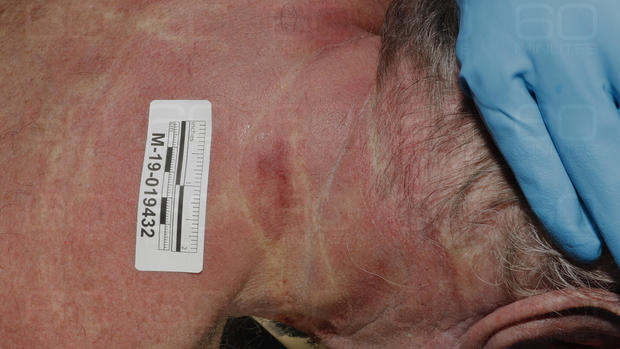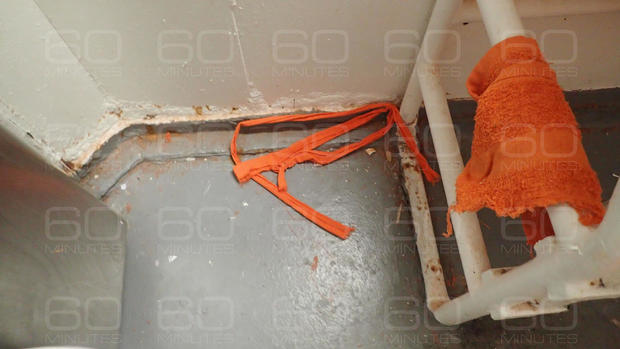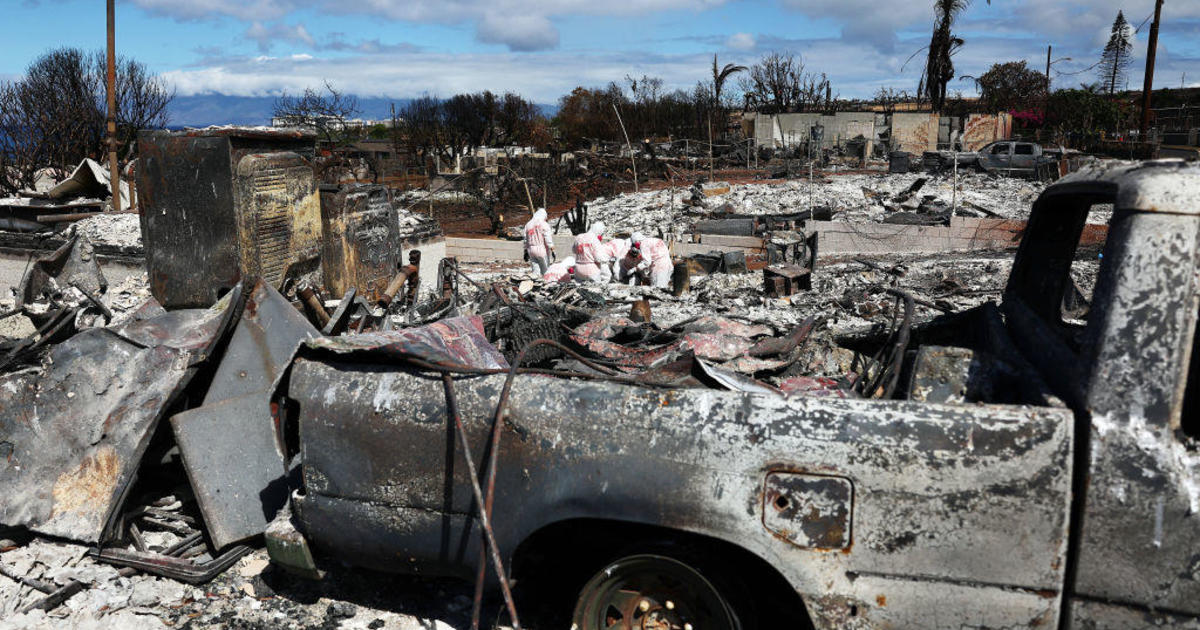Jeffrey Epstein's autopsy: A closer look
This report contains graphic images that some viewers may find disturbing.
Almost five months after convicted sex offender Jeffrey Epstein was found dead in his jail cell, 60 Minutes has obtained the photographs the New York City medical examiner's office took, including inside his cell and during his autopsy.
The photographs shed new light on the circumstances of the disgraced financier's apparent suicide, which has fueled online conspiracy theories. But multiple forensic pathologists 60 Minutes spoke to came to a consensus that without one image—the position of how Epstein's body was found in his cell—it is difficult to determine the cause of death with certainty.
"Even after reviewing all the autopsy photos, reading the autopsy, and looking at the photos from inside the cell, we still have questions," said 60 Minutes correspondent Sharyn Alfonsi, who reports on a months-long investigation into the circumstances of Epstein's death on the broadcast Sunday.
- 60 Minutes investigates the death of Jeffrey Epstein
- The handwritten note found in Jeffrey Epstein's jail cell
What is not in question is that Epstein is dead. According to forensic pathologist Dr. Michael Baden, who was hired by Jeffrey Epstein's brother to look into the death and was present during the autopsy, the fingerprints on the body found in Epstein's cell at the Metropolitan Correctional Center in the early morning of August 10, 2019 match the fingerprints taken of Epstein when he was booked during a 2006 arrest in Florida.
No photo exists of Epstein's body as it was found in his cell, Dr. Baden said. Additional forensic pathologists 60 Minutes consulted say that knowing the position in which Epstein was found would clarify certain aspects of the autopsy, including the location of the ligature around his neck, injuries found on his body postmortem, and the way lividity settled, which is the way the blood pools after death.
"At this length of time, [we] still don't have that information," Dr. Baden said. "So if this was called a suicide without all that information, it was a premature judgment."
New York City Chief Medical Examiner Dr. Barbara Sampson ruled in August that Epstein's cause of death was a suicide by hanging.
Among the injuries found on Epstein during the autopsy are contusions on both wrists, an abrasion on his left forearm, and deep muscle hemorrhaging in his left shoulder muscle. Photos 60 Minutes reviewed also show an injury to the back of his neck, a cut on his lip, and an injection mark in his arm, though it is unknown whether the latter injuries happened during an attempt to resuscitate Epstein at the hospital.
Dr. Baden said small burst capillaries, known as petechiae, found on Epstein's face, mouth, and eyes are often an indication of strangulation. But it was injuries to Epstein's neck that make Dr. Baden call into question the official ruling of suicide.
Autopsy photos show fractures of the left and right thyroid cartilage, which sits at the front of the neck, and the left hyoid bone, a u-shaped bone that sits under the jaw and acts as an anchor for the tongue.
"I have never seen three fractures like this in a suicidal hanging," Dr. Baden tells Alfonsi on the broadcast. He added: "Going over a thousand jail hangings, suicides in the New York City state prisons over the past 40–50 years, no one had three fractures."
The pathologists 60 Minutes spoke with agreed that eye hemorrhaging is common in homicidal strangulation and less common, though not impossible, in suicidal hangings. But they disagreed on the significance of the three breaks in Epstein's neck. One concurred with Dr. Baden that the three neck fractures were very uncommon and raise additional questions. Another pathologist said the neck trauma has been associated with both strangulation and hanging, especially in older men. Epstein was 66.
Dr. Kristin Roman, a medical examiner for New York City who conducted the autopsy that Dr. Baden observed, at first did not classify the death as a suicide and listed the manner of death as "pending." A few days later, Dr. Sampson said she had reviewed additional evidence and changed the ruling to suicide. She has not revealed what the additional evidence was, but sources tell 60 Minutes that one element was his alleged prior suicide attempt.
60 Minutes reached out to the office of the New York City medical examiner but did not hear back. In response to a media appearance Dr. Baden made on Fox News in October, Dr. Sampson told the New York Times she stands "firmly" behind her findings in the August autopsy report.
"In general, fractures of the hyoid bone and the cartilage can be seen in suicides and homicides," she said at the time.
In an October interview with the Associated Press, Dr. Sampson added: "You can't draw a conclusion from one finding. Everything about the case has to be considered."
Dr. Baden himself is not without controversy. He briefly served as New York City's medical examiner, but Mayor Edward Koch dismissed him a year later. He has also taken provocative stances in high-profile cases, including in the 1995 trial for O.J. Simpson. An HBO documentary series has featured Baden, who estimates he has performed more than 20,000 autopsies in his 45-year career.
In addition to the photos 60 Minutes obtained of Epstein's autopsy, photos from his jail cell also appear to show inconsistencies, including questions about whether investigators examined the correct ligature used in Epstein's death. At least two nooses were photographed lying on the floor of the cell, both appearing to be made from strips of orange bedsheets.
But photos of the noose taken in as evidence and presumably thought to be responsible for killing Epstein show both ends of the noose folded and hemmed, not cut. Sources have told 60 Minutes that the guard who found Epstein cut him down before trying to revive him.
"It doesn't look like anybody ever took scissors to it," Alfonsi said. "So there is some question—is that the right noose?'
Federal prosecutors have charged the two guards who were on duty on the overnight shift the morning Epstein was found. Michael Thomas, who alone found Epstein's body, and Tova Noel face charges of making false records, conspiring to make false records, and conspiring to defraud the United States. Both have pleaded not guilty.
Because of the ongoing criminal investigation into the guards and other open investigations into Epstein's death, neither the Justice Department nor the FBI would comment to 60 Minutes.
"We have examined so many photos, looked at the evidence, and talked to so many people," Alfonsi said. "But we still have many questions. And we're looking forward to getting more answers."
If you or someone you know is struggling with suicidal thoughts, contact the National Suicide Prevention Lifeline at 1-800-273-8255 or the Crisis Text Line by texting HOME to 741741.
The video above was produced by Brit McCandless Farmer and Sarah Shafer Prediger. It was edited by Sarah Shafer Prediger.


